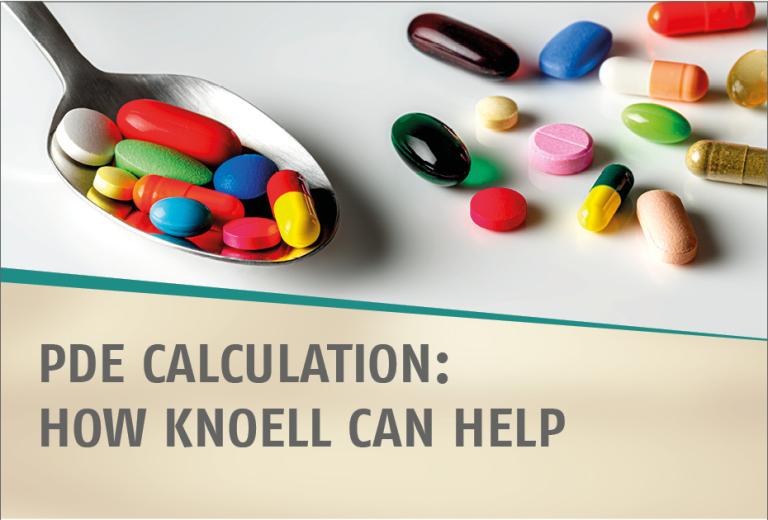PDE calculation: How knoell can help
When manufacturing pharmaceuticals (veterinary or human), there are many safety considerations that you need to take into account....
You need to protect your workers, but also the end user of the drug: patients, users, consumers of animal-derived foods and the target species for veterinary medicines – all will come into contact with the medication produced.
In shared facilities, cross-contamination can be a concern and the determination of a safe threshold value - the Permitted Daily Exposure (PDE) value - is a hazard-based assessment that is required according to Good Manufacturing Practice (GMP) standards. In the development of veterinary medicines, the PDE is needed to calculate maximum residue limits (MRLs) for products used in food-producing species, and all veterinary medicines must have a User Safety Risk Assessment (USRA) in the application dossier, which also refers to the PDE.
The team of toxicologists at knoell can support you with a specific assessment and PDE determination that takes into account the pharmacologic, toxicologic and kinetic properties of the Active Pharmaceutical Ingredient (API). Our highly skilled and experienced experts can prepare a comprehensive literature-based PDE report to meet the relevant requirements. The knoell team can provide support for the following activities:
- Literature search
- Data analysis
- Determination of toxicological threshold
- Preparation of PDE report and summary of the assessment process
Entrust your PDE value determination to our leading experts in toxicology and pharmaceutical development, and reduce your workload (and stress!) for GMP inspections, MRL applications and USRAs.

